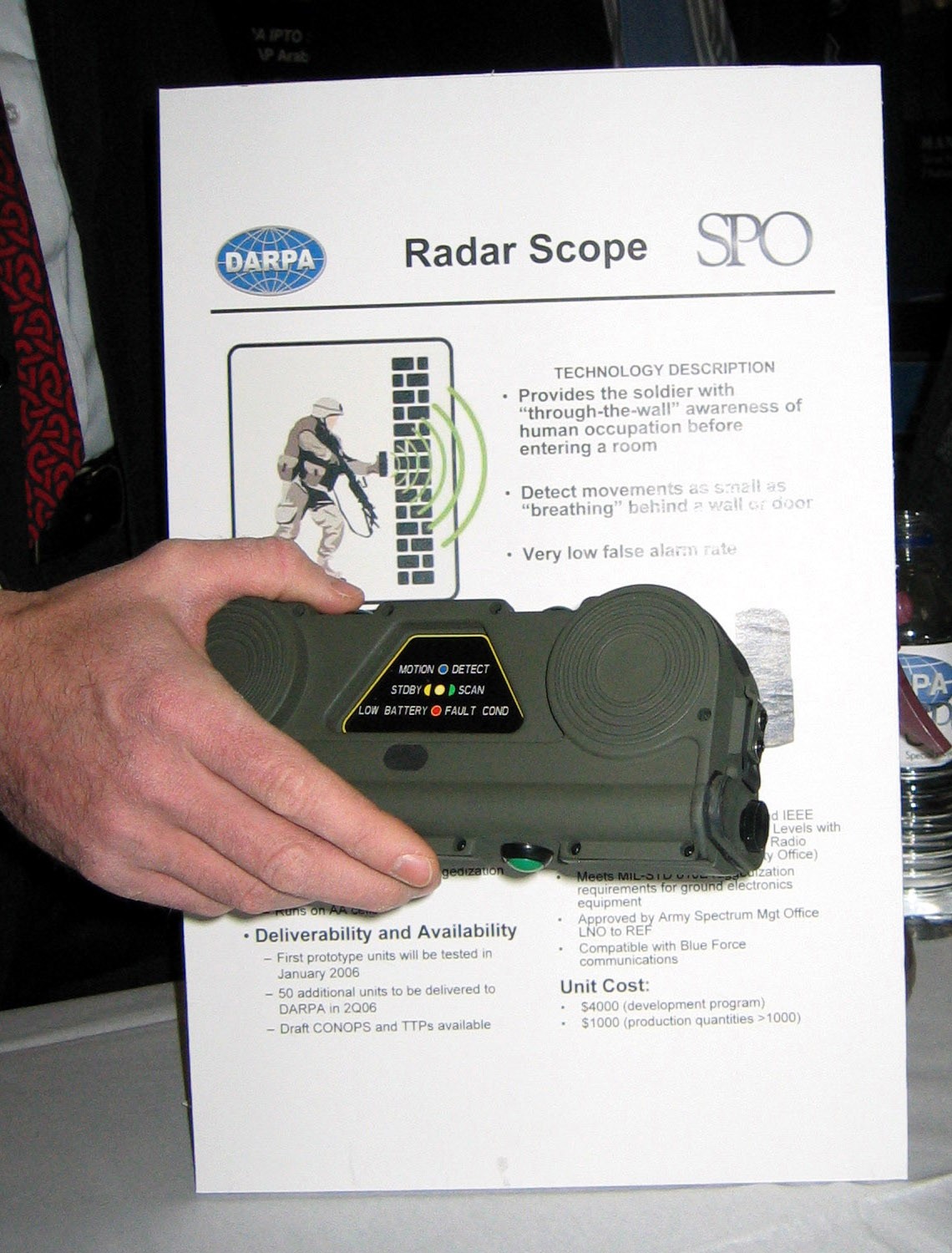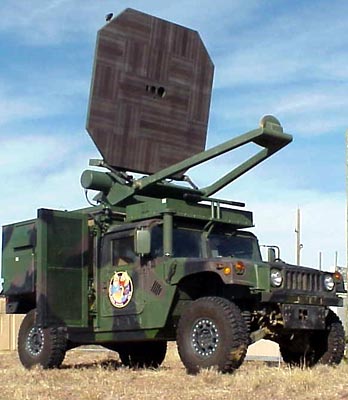Nick Turse
Duane Schattle doesn’t mince words. “The cities are the problem,” he says. A retired Marine infantry lieutenant colonel who worked on urban warfare issues at the Pentagon in the late 1990s, he now serves as director of the Joint Urban Operations Office at U.S. Joint Forces Command. He sees the war in the streets of Iraq’s cities as the prototype for tomorrow’s battlespace. “This is the next fight,” he warns. “The future of warfare is what we see now.”
He isn’t alone. “We think urban is the future,” says James Lasswell, a retired colonel who now heads the Office of Science and Technology at the Marine Corps Warfighting Laboratory. “Everything worth fighting for is in the urban environment.” And Wayne Michael Hall, a retired Army brigadier general and the senior intelligence advisor in Schattle’s operation, has a similar assessment. “We will be fighting in urban terrain for the next hundred years.”
Last month, in a hotel nestled behind a medical complex in Washington, D.C., Schattle, Lasswell, and Hall, along with Pentagon power-brokers, active duty and retired U.S. military personnel, foreign coalition partners, representatives of big and small defense contractors, and academics who support their work gathered for a “Joint Urban Operations, 2007” conference. Some had served in Iraq or Afghanistan; others were involved in designing strategy, tactics, and concepts, or in creating new weaponry and equipment, for the urban wars in those countries. And here, in this hotel conference center, they’re talking about military technologies of a sort you’ve only seen in James Cameron’s 2000-2002 television series Dark Angel.
I’m the oddity in this room of largely besuited defense contractors, military retirees, and camouflage-fatigue-clad military men at a conference focused on strategies for battling it out in the labyrinthine warrens of what urbanologist Mike Davis calls “the planet of slums.” The hulking guy who plops down next to me as the meeting begins is a caricature of just the attendee you might imagine would be at such a meeting. “I sell guns,” he says right off. Over the course of the conference, this representative of one of the world’s best known weapons manufacturers will suggest that members of the media be shot to avoid bad press and he’ll call a local tour guide he met in Vietnam a “bastard” for explaining just how his people thwarted U.S. efforts to kill them. But he’s an exception. Almost everyone else seems to be a master of serene anodyne-speak. Even the camo-clad guys seem somehow more academic than warlike.
In his tour de force book Planet of Slums, Davis observes, “The Pentagon’s best minds have dared to venture where most United Nations, World Bank or Department of State types fear to go… [T]hey now assert that the ‘feral, failed cities’ of the Third World — especially their slum outskirts — will be the distinctive battlespace of the twenty-first century.” Pentagon war-fighting doctrine, he notes, “is being reshaped accordingly to support a low-intensity world war of unlimited duration against criminalized segments of the urban poor.”
But the mostly male conference-goers planning for a multi-generational struggle against the global South’s slums aren’t a gang of urban warfare cowboys talking non-stop death and destruction; and they don’t look particularly bellicose either, as they munch on chocolate-chip cookies during our afternoon snack breaks in a room where cold cuts and brochures for the Rapid Wall Breaching Kit — which allows users to blast a man-sized hole in the side of any building — are carefully laid out on the tables. Instead, these mild-mannered men speak about combat restraint, “less than lethal weaponry,” precision targeting, and (harking back to the Vietnam War) “winning hearts and minds.”
The Men of Urban Warfare
Take Dr. Russell W. Glenn, a thin, bespectacled RAND Senior Policy Researcher who looks for all the world like some bookish college professor Hollywood dreamed up. You’d never guess he went to the Army’s airborne, ranger, and pathfinder schools and is a veteran of Operation Desert Storm. You’d also never suspect that he might be the most prolific planner for the Pentagon’s century-long slum fight of tomorrow.
In Planet of Slums, Davis notes that the RAND Corporation, a non-profit think-tank established by the Air Force in 1948, has been a key player in pioneering the conceptual framework that has led to the current generation of what’s called, in the jargon of this meeting, “urban operations” or, more familiarly, UO. Glenn, it so happens, is their main man in the field. He travels the planet studying counterinsurgency warfare. Of late, he’s been to the Solomon Islands, where an island rebellion occurred in the late 1990s, the Philippines, where an insurgency has been raging for decades (if not since the U.S. occupation at the dawn of the twentieth century), and, of course, Iraq. He’s co-authored well over 20 UO studies for RAND including, most recently, ”People Make the City”: Joint Urban Operations Observations and Insights from Afghanistan and Iraq (publicly available in 86-page executive summary form) and the still-classified A Tale of Three Cities: Analyzing Joint Urban Operations with a Focus on Fallujah, Al Amara, and Mosul.
On the technological front, the Pentagon’s blue-skies research outfit, the Defense Advanced Research Projects Agency (DARPA) sent its grandfatherly-looking deputy director, Robert F. Leheny, to talk about such UO-oriented technology as the latest in unmanned aerial vehicles (UAVs) and sense-through-walls technologies that allow troops to see people and objects inside buildings. While Leheny noted that 63% of DARPA’s $3 billion yearly budget ($600 million of it dedicated to UO technologies in the coming years) is funneled to industry partners, DARPA is only a part of the story when it comes to promoting corporate assistance in this 100-year-war growth area.
The largest contractors in the military-corporate complex are already hard at work helping the Pentagon prepare for future urban occupations. Raytheon, L-3 Communications, and Science Applications International Corporation (SAIC) — the 5th, 7th, and 10th largest Pentagon contractors last year, taking in a combined $18.4-plus billion from the Department of Defense — have all signed Cooperative Research and Development Agreements with the U.S. Joint Forces Command, according to Berry “Dan” Fox, the Deputy Director of Science and Technology at its Joint Urban Operations Office.
As you might imagine, smaller contractors are eager to climb aboard the urban warfare gravy train. At the conference, Lite Machines Corporation was a good example of this. It was vigorously marketing a hand-launched, low-flying UAV so light that it resembled nothing more than a large, plastic toy water rocket with miniature helicopter rotors. The company envisions a profitably privacy-free future in which urban zones are besieged by “swarms” of such small UAVs that not only peek into city windows, but even invade homes. According to a company spokesman, “You could really blanket a ground area with as many UAVs as you want…. penetrate structures, see through a window or even break a window,” in order to fly inside a house or apartment and troll around.
DARPA’S Leheny also extolled hovering UAVs, specifically the positively green-sounding Organic Micro Air Vehicle which brings to mind the “spinners” in Blade Runner or, even earlier in blow-your-mind futuristic movie history, V.I.N.CENT from Disney’s The Black Hole. This drone, Leheny noted, has “perch and stare” capabilities that allow it to lie in wait for hours before fixing on a target and guiding in extended-line-of-sight or beyond-line-of-sight weapons. He also described in detail another DARPA-pioneered unmanned aerial vehicle, the WASP — a tiny, silent drone that spies on the sly and can be carried in a soldier’s pack. Leheny noted that there are now “a couple hundred of these flying in Iraq.”
In addition to endless chatter about the devastated “urban canyons” of Iraq and Afghanistan, the specters of past battleground cities — some of them, anyway — were clearly on many minds. There were constant references to urban battle zones of history like Stalingrad and Grozny or such American examples as Manila in 1945 and Panama City in 1989. Curiously neglected, however, were the flattened cities of Germany and Japan in World War II, not to speak of the bombed-out cities of Korea and Vietnam. Perhaps the Korean and Vietnam Wars weren’t on the agenda because “restraint” and “precision” were such watchwords of the meeting. No one seemed particularly eager to discuss the destruction visited on the Iraqi city of Fallujah either — three-quarters of its buildings and mosques were damaged in an American assault in November 2004.
During James Lasswell’s presentation, he was quite specific about the non-Fallujah-like need to be “very discriminate” in applying firepower in an urban environment. As an example of the ability of technology to aid in such efforts, he displayed a photo of the aftermath of an Israeli strike on a three-story Lebanese building. The third floor of the structure had been obliterated, while the roof above and the floors below appeared relatively unscathed. In an aside, Lasswell mentioned that, while the effort had been a discriminating one, the floor taken out “turned out to be the wrong floor.” A rumble of knowing chuckles swept the room.
Fighting in the City of Your Choice, 2045
Discrimination, it turned out, didn’t mean legal constraint. Speakers and conference-goers alike repeatedly lamented the way international law and similar hindrances stood in the way of unleashing chemical agents and emerging technologies. Microwave-like pain rays and other directed energy weapons — such as the Active Denial System which inflicts an intense burning sensation on victims — were reoccurring favorites of the gathering. During their PowerPoint presentation, the men from Lite Machines, for instance, showed a computer rendering of their micro-UAVs attacking an unarmed crowd gathered in a town square with a variety of less-than-lethal weapons like disorienting laser dazzlers and chemical gases (vomiting and tear-gas agents), while a company spokesman regretfully mentioned that international regulations have made it impossible to employ such gases on the battlefield. Undoubtedly, this was a reference to the scorned Chemical Weapons Convention, which has been binding for the last decade.
RAND’s Glenn similarly brought up the possibility of reassessing such international conventions and overcoming fears that chemical weapons might fall into the “wrong hands.” Saddam Hussein was his example of such “wrong hands,” but the hands responsible for Abu Ghraib, Mahmudiyah, Hamdania, Haditha, or the invasion of Iraq itself — to find non-existent banned weapons — seemed to give him no pause.
While the various speakers at the conference focused on the burgeoning inhabitants of the developing world’s slum cities as targets of the Pentagon’s 100-year war, it was clear that those in the “homeland” weren’t about to escape some of its effects either. For example, back in 2004, Marines deploying to Iraq brought the Long Range Acoustic Device (LRAD) with them. A futuristic non-lethal weapon alluded to multiple times at the conference, it emits a powerful tone which can bring agonizing pain to those within earshot. Says Woody Norris, chairman of the American Technology Corporation, which manufactures the device: “It will knock [some people] on their knees.” That very same year, the LRAD was deployed to the streets of the Big Apple (but apparently not used) by the New York Police Department as a backup for protests against the Republican National Convention. In 2005, it was shipped to “areas hit by Hurricane Katrina” for possible “crowd control” purposes and, by 2006, was in the hands of U.S. Border Patrol agents. In that same year, it was also revealed that the Los Angeles County Sheriff’s Department had begun testing the use of remote-controlled surveillance UAVs — not unlike those now operating above Iraqi cities — over their own megalopolis.
When it came to the “homeland,” conference participants were particularly focused on moving beyond weaponry aimed at individuals, like rubber bullets. Needed in the future, they generally agreed, were technologies that could target whole crowds at once — not just rioters but even those simply attending “demonstrations that could go violent.”
Other futuristic UO concepts are also coming home. According to Dan Fox of the Joint Urban Operations Office, the Department of Justice, like the military, is currently working on sense-through-wall technologies. His associate Duane Schattle is collaborating with the U.S. Northern Command (NORTHCOM) — set up by the Bush administration in 2002 and whose area of operations is “America’s homefront” — on such subjects as “sharing intelligence, surveillance, and reconnaissance, command and control capabilities.” He also spoke at the conference about developing synergy between the Departments of Defense and Homeland Security in regard to urban-operations technologies. He, too, expressed his hope that microwave weapon technology would be made available for police use in this country.
A specific goal of DARPA, as a slide in deputy chief Leheny’s presentation made clear, is to “make a foreign city as familiar as the soldier’s backyard.” This would be done through the deployment of intrusive sensor, UAV, and mapping technologies. In fact, there were few imaginable technologies, even ones that not so long ago inhabited the wildest frontiers of science fiction, that weren’t being considered for the 100-year battle these men are convinced is ahead of us in the planet’s city streets. The only thing not evidently open to discussion was the basic wisdom of planning to occupy foreign cities for a century to come. Even among the most thoughtful of these often brainy participants, there wasn’t a nod toward, or a question asked of, the essential guiding principle of the conference itself.
With their surprisingly bloodless language, antiseptic PowerPoint presentations, and calm tones, these men — only one woman spoke — are still planning Iraq-style wars of tomorrow. What makes this chilling is not only that they envision a future of endless urban warfare, but that they have the power to drive such a war-fighting doctrine into that future; that they have the power to mold strategy and advance weaponry that can, in the end, lock Americans into policies that are unlikely to make it beyond these conference-room doors, no less into public debate, before they are unleashed.
These men may be mapping out the next hundred years for urban populations in cities across the planet. At the conference, at least, which ones exactly seemed beside the point. Who could know, after all, whether in, say, 2045, the target would be Mumbai, Lagos, or Karachi — though one speaker did offhandedly mention Jakarta, Indonesia, a city of nine million today, as a future possibility.
Along with the lack of even a hint of skepticism about the basic premise of the conference went a fundamental belief that being fought to a standstill by a ragtag insurgency in Iraq was an issue to be addressed by merely rewriting familiar tactics, strategy, and doctrine and throwing multi-billions more in taxpayer dollars — in the form of endless new technologies — at the problem. In fact, listening to the presentations in that conference room, with its rows of white-shrouded tables in front of a small stage, it would not have been hard to believe that the U.S. had defeated North Korea, had won in Vietnam, had never rushed out of Beirut or fled Mogadishu, or hadn’t spent markedly more time failing to achieve victory in Afghanistan than it did fighting the First and Second World Wars combined.
To the rest of the world, at least, it’s clear enough that the Pentagon knows how to redden city streets in the developing world, just not win wars there; but in Washington — by the evidence of this “Joint Urban Operations, 2007” conference — it matters little. Advised, outfitted, and educated by these mild-mannered men who sipped sodas and noshed on burnt egg rolls between presentations, the Pentagon has evidently decided to prepare for 100 years more of the same: war against various outposts of a restless, oppressed population of slum-dwellers one billion strong and growing at an estimated rate of 25 million a year. All of these UO experts are preparing for an endless struggle that history suggests they can’t win, but that is guaranteed to lead to large-scale destruction, destabilization, and death. Unsurprisingly, the civilians of the cities that they plan to occupy, whether living in Karachi, Jakarta, or Baghdad, have no say in the matter. No one thought to invite any of them to the conference.
Nick Turse is the associate editor and research director of Tomdispatch.com. He has written for the Los Angeles Times, the San Francisco Chronicle, the Nation, the Village Voice, and regularly for Tomdispatch.com. His first book, The Complex, an exploration of the new military-corporate complex in America, is due out in the American Empire Project series by Metropolitan Books in 2008. His new website NickTurse.com (up only in rudimentary form) will fully launch in the coming months. This article appeared at TomDispatch on October 11, 2007. Posted at Japan Focus on October 11, 2007.










